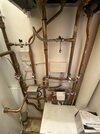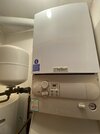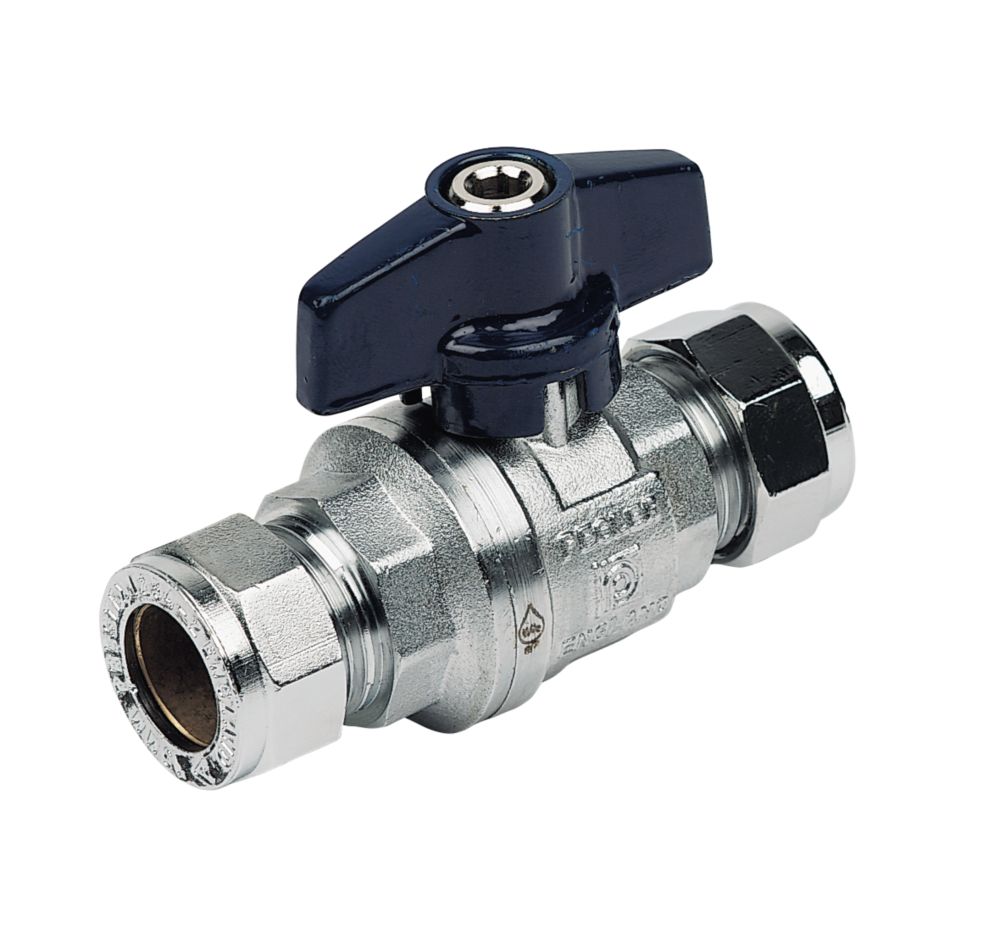1. Sometimes when those isolation valves leak from the spindle, turning the spindle open - closed - open and so on will clear the problem. However, if it doesn't, it may make the leak worse.
2. The circled valve is connected to the boiler's return pipe.
2.1 In theory, removing that valve could release all the water in the system - much more than a bucketful.
2.2 On the other hand, provided there are no other leaks on the system, it should create a partial vacuum after releasing, say, two or three litres.
2.3 As a check, turn the valve off, release system pressure by bleeding a radiator, and remove the flexible pipe from the left hand end, then open the valve again with a bucket beneath the open end. If you are lucky, the flow will stop (or at least slow to a small trickle) and you can remove and replace the valve. If unlucky, you can close the valve again and replace the flexi.
2.4 Use a decent quality valve like a Pegler as a replacement to reduce the chances of a recurrence.




